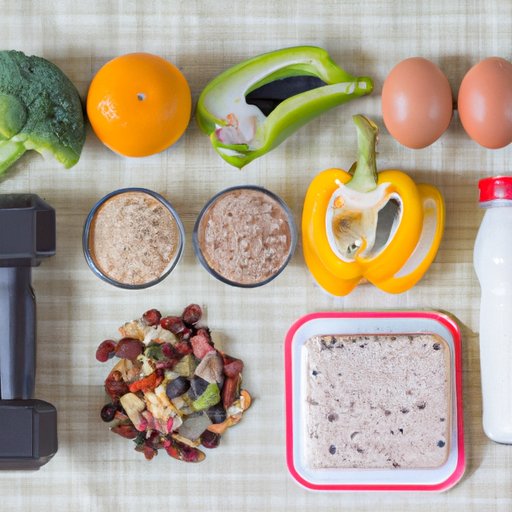
I. Introduction
Struggling to gain weight can be just as frustrating as trying to lose weight. Whether you’re an athlete looking to bulk up or just wanting to fill out your clothes a bit more, weight gain requires a careful balance of diet and exercise. In this article, we’ll explore practical tips for gaining weight in a healthy and sustainable way.
II. Focus on High-Calorie Foods
One of the simplest ways to gain weight is to consume more calories than you burn. High-calorie foods can help increase calorie intake without having to eat large portions. Nuts, seeds, peanut butter, avocados, and cheese are all great examples of high-calorie foods that can be easily incorporated into meals and snacks.
To make the most out of high-calorie foods, try adding them to meals you already enjoy. For example, top your morning oatmeal with almonds or add avocado to your turkey sandwich at lunch. You can also create delicious smoothies with your favorite nut butter, fruits, and veggies.
III. Increase Protein Intake
Protein is essential for gaining muscle mass, which is an important aspect of healthy weight gain. Aim to consume at least 1 gram of protein per pound of body weight each day. Meat, fish, eggs, and legumes are all great sources of protein.
If you struggle to consume enough protein through meals alone, try incorporating protein shakes or bars into your daily routine. There are many high-quality protein supplements available that can help you meet your daily protein needs.
IV. Make Snacking a Priority
Snacking throughout the day can be a helpful way to increase calorie intake and achieve weight gain goals. Choose calorie-dense snacks such as energy bars, protein shakes, and dried fruits.
It’s important to note that snacking alone won’t result in weight gain. Rather, it’s an addition to a healthy and balanced meal plan. Make sure to snack mindfully and prioritize nutrient-dense options.
V. Lift Weights
Weightlifting is an effective way to gain muscle mass and increase overall weight. Basic weightlifting exercises such as squats, deadlifts, and bench press can be incorporated into a fitness routine to target different muscle groups.
If you’re new to weightlifting, start with lighter weights and focus on proper form. Gradually increase weight and intensity as you become more comfortable with the exercises. It’s also important to allow for rest days between workouts to give muscles time to recover and grow.
VI. Decrease Cardio
While cardio is great for overall health, excessive cardio can make it difficult to gain weight. To balance the benefits of cardio with weight gain goals, try reducing cardio time and replacing it with low-intensity exercises such as walking or yoga.
If cardio is an important aspect of your fitness routine, try performing it after weightlifting or on separate days. This allows for adequate energy stores to be available for weightlifting while still achieving cardiovascular health benefits.
VII. Consistency is Key
Consistency is key when it comes to achieving weight gain goals. Aim to create consistent daily habits around meals and workouts. This means scheduling specific times for meals and workouts each day and sticking to them as much as possible.
It’s important to note that progress towards weight gain goals may be slow and steady. Be patient and consistent with your habits and the results will come.
VIII. Get Enough Sleep
Sleep is essential for muscle recovery and growth. Aim for at least 7-8 hours of sleep each night and establish a bedtime routine for optimal sleep quality. This may include avoiding electronic devices before bed and creating a relaxing sleep environment.
IX. Conclusion
Healthy weight gain requires a careful balance of diet and exercise. By incorporating high-calorie foods, increasing protein intake, prioritizing snacks, lifting weights, decreasing cardio, creating consistent habits, and getting enough sleep, you can achieve your weight gain goals in a safe and sustainable way. Remember to be patient and kind to yourself throughout the process.




